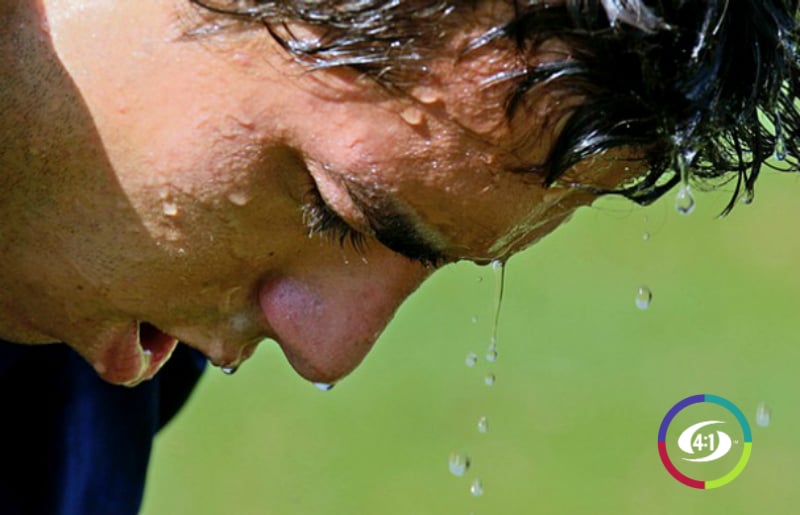
Sweating plays a critical role in maintain exercise performance. During moderate to intense exercise your muscles generate considerable amounts of heat. This heat is dissipated through sweating which can involve considerable fluid loss. Small losses in body fluid via sweating can have major consequences on performance as illustrated in the table below.

Knowing your sweat rate is important in developing an optimum hydration plan. The average person sweats between 22 and 47 ounces per hour doing exercise however it can vary greatly and each person has a different sweat rate. At 70% VO2Max exercising at 70° can product fluid losses ranging from 22 to 47 ounces.
If you consume too little fluid during exercise your body pulls fluids from your cells. If you consume too much water you can dilute the electrolytes in your blood producing a condition called hyponatremia, which can be life threatening.

Measuring Your Sweat Rate
Fortunately determining your sweat rate is relatively easy. Weigh yourself before and after a workout and convert your weight loss to fluid. (1 pound weight loss equals approximately 16 ounces of fluid). If you lose 1.5 pounds in 60 minutes of exercise that's equal to 24 ounces of fluid which according to the Sweat Table makes you a moderate sweater. Then develop your own hydration plan. It may involve a sports drink or an electrolyte replenisher plus water. The bottom line- achieving the right fluid and electrolyte balance pays big dividends on performance.



